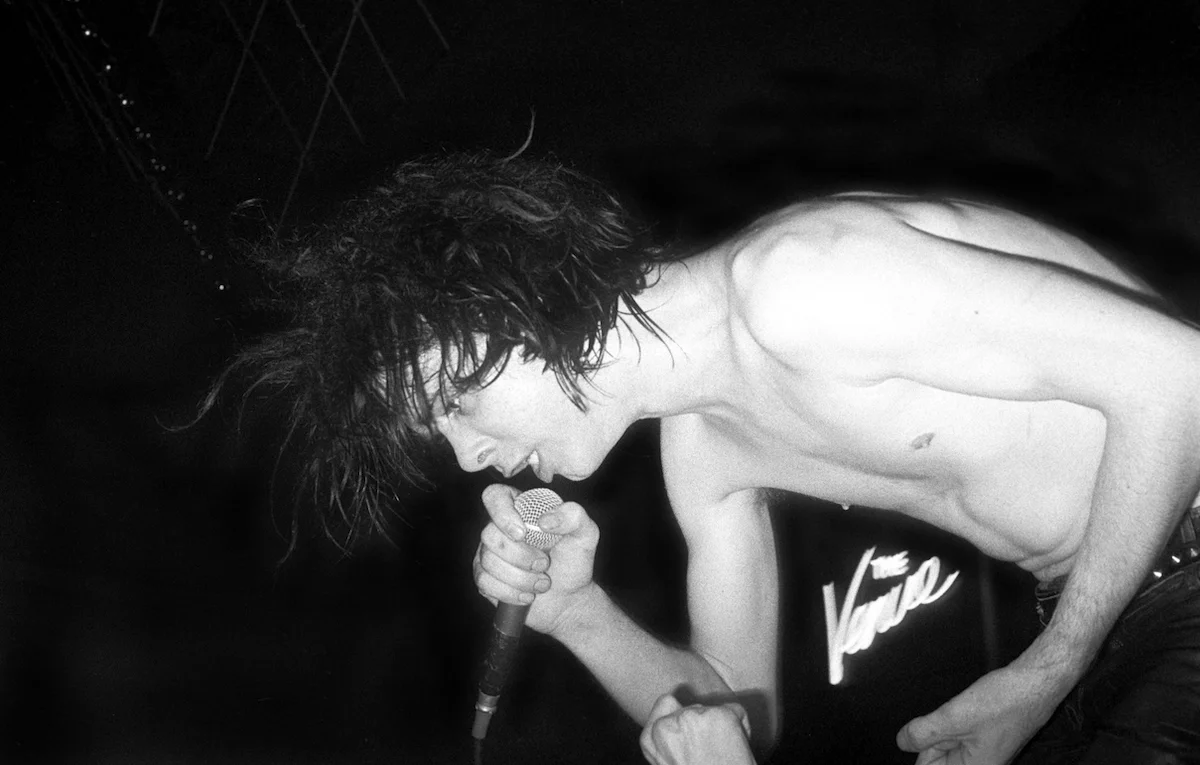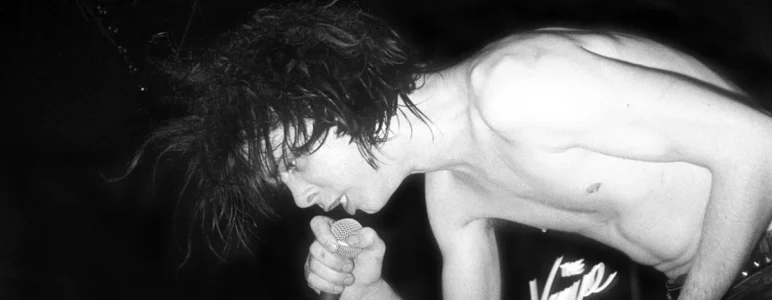Post-punk, a genre that emerged in the late 1970s as a more experimental and avant-garde evolution of punk rock, has left an indelible mark on the music landscape. Characterized by its diverse sounds, ranging from dark and moody atmospheres to danceable rhythms and innovative use of electronic instruments, post-punk pushed the boundaries of what punk could be. This article delves into the top ten post-punk bands that not only defined the genre but also influenced generations of musicians and continue to resonate with fans around the world.
Joy Division
Joy Division stands as a pillar of the post-punk movement, renowned for their haunting melodies and introspective lyrics. Formed in Manchester in 1976, the band quickly distinguished themselves with a sound that was both raw and sophisticated. Frontman Ian Curtis’s deep, melancholic vocals combined with Peter Hook’s melodic bass lines and Bernard Sumner’s sharp guitar work created a unique soundscape that was both dark and compelling. Their seminal albums, “Unknown Pleasures” and “Closer,” are often cited as masterpieces of the genre, showcasing the band’s ability to blend emotional depth with musical innovation. Despite Curtis’s tragic death in 1980, Joy Division’s legacy endures, influencing countless artists and maintaining a devoted fan base worldwide.

The Cure
The Cure’s journey from post-punk roots to global stardom exemplifies the genre’s versatility and enduring appeal. Originating in Crawley, West Sussex, in 1976, The Cure initially embraced the dark and moody aesthetics of post-punk, with albums like “Seventeen Seconds” and “Faith” cementing their place in the genre. Frontman Robert Smith’s distinctive voice and poetic lyrics, paired with the band’s atmospheric instrumentation, created a sound that was both melancholic and mesmerizing. As the band evolved, they incorporated elements of gothic rock, new wave, and pop, allowing them to explore a broader sonic palette while maintaining their post-punk essence. Hits like “Just Like Heaven” and “Boys Don’t Cry” showcase their ability to craft timeless songs that resonate across generations, ensuring The Cure’s status as post-punk icons.
Siouxsie and the Banshees
Siouxsie and the Banshees were instrumental in shaping the post-punk landscape with their innovative approach to music and visual presentation. Formed in London in 1976, the band was led by the charismatic Siouxsie Sioux, whose powerful vocals and commanding stage presence set them apart from their contemporaries. Their music blended the raw energy of punk with gothic and art rock elements, resulting in a sound that was both dark and sophisticated. Albums like “Kaleidoscope” and “Juju” are celebrated for their intricate guitar work, driving rhythms, and atmospheric textures. Siouxsie and the Banshees were also pioneers in music video production and fashion, influencing not just music but also broader cultural trends. Their willingness to experiment and push boundaries has left a lasting legacy in the post-punk genre and beyond.
Gang of Four
Gang of Four brought a distinctive blend of punk energy and political consciousness to the post-punk scene, making them one of the most influential bands of the era. Originating from Leeds in 1976, the band was known for their sharp, incisive lyrics that critiqued capitalism, consumerism, and societal norms. Musically, Gang of Four fused punk’s raw intensity with funk-inspired rhythms and jagged guitar riffs, creating a sound that was both danceable and intellectually stimulating. Their debut album, “Entertainment!,” is hailed as a post-punk classic, featuring tracks that combine catchy hooks with thought-provoking themes. Gang of Four’s innovative approach to rhythm and their willingness to tackle complex subjects set them apart, influencing a wide range of genres from indie rock to hip-hop.
Wire
Wire’s minimalist and avant-garde approach to post-punk has earned them a revered place in music history. Formed in London in 1976, Wire quickly distinguished themselves with their experimental sound and intellectual approach to songwriting. Their debut album, “Pink Flag,” is often regarded as a seminal work in the post-punk genre, blending the raw energy of punk with art rock’s experimental tendencies. Wire’s music is characterized by its concise song structures, innovative guitar work, and thought-provoking lyrics, which often explore themes of technology, isolation, and societal change. Subsequent albums like “Chairs Missing” and “154” continued to push musical boundaries, incorporating electronic elements and more complex arrangements. Wire’s commitment to artistic integrity and innovation has influenced countless artists and solidified their legacy as pioneers of post-punk.
Talking Heads
Talking Heads, while often associated with new wave, are undeniably a pivotal force in the post-punk movement. Originating from New York City in 1975, the band, led by the idiosyncratic David Byrne, blended post-punk’s experimental spirit with elements of funk, world music, and art rock. Albums like “Remain in Light” and “Speaking in Tongues” showcase their willingness to explore unconventional rhythms and structures, creating a sound that was both intellectually engaging and rhythmically compelling. Talking Heads’ innovative approach to music and their emphasis on visual artistry have left a lasting impact on the post-punk genre and beyond, influencing a wide range of artists and movements. Their ability to fuse diverse musical influences while maintaining a cohesive and distinctive sound exemplifies the creative potential of post-punk.
Echo & the Bunnymen

Echo & the Bunnymen emerged from the vibrant Liverpool scene in the late 1970s, quickly becoming one of post-punk’s most charismatic and melodic bands. Formed in 1978, the band featured the distinctive vocals of Ian McCulloch, the atmospheric guitar work of Will Sergeant, and the driving rhythms of Les Pattinson. Their music is characterized by lush soundscapes, haunting melodies, and emotionally resonant lyrics, creating a captivating and immersive listening experience. Albums like “Crocodiles,” “Heaven Up Here,” and “Ocean Rain” are celebrated for their rich production and the band’s ability to blend post-punk’s edge with a more expansive, romantic sensibility. Echo & the Bunnymen’s influence extends beyond music, impacting fashion, art, and the broader alternative culture, ensuring their place among post-punk’s top echelons.
Public Image Ltd (PiL)
Public Image Ltd (PiL), founded by former Sex Pistols frontman John Lydon, represents a bold and uncompromising take on post-punk. Established in 1978, PiL’s music is characterized by its experimental approach, blending elements of dub, funk, and avant-garde with punk’s defiant attitude. Albums like “Metal Box” and “Happy?” showcase their willingness to push musical boundaries, creating a sound that is both challenging and groundbreaking. PiL’s innovative use of looping, sampling, and unconventional song structures set them apart from their peers, while Lydon’s provocative lyrics and vocal delivery added a layer of intensity and complexity. Public Image Ltd’s unwavering commitment to artistic integrity and their fearless exploration of new sonic territories have made them a key player in the post-punk movement, influencing countless artists across diverse genres.
The Birthday Party
The Birthday Party, formed in Melbourne in 1978 and later based in London, is often categorized within the post-punk genre. Led by the enigmatic Nick Cave, the band blended the raw energy of punk with dark, atmospheric, and avant-garde elements, creating a sound that was both unsettling and compelling. Their music incorporates dissonant guitar work, brooding lyrics, and a theatrical stage presence, all of which are hallmarks of post-punk’s experimental nature. Additionally, The Birthday Party’s influence extends into gothic rock and alternative music, further solidifying their place within the post-punk framework. Their willingness to explore unconventional song structures and thematic depth makes them a quintessential post-punk band.

Bauhaus
Bauhaus is often hailed as the progenitors of gothic rock, but their contributions to post-punk are equally significant. Formed in Northampton in 1978, Bauhaus blended post-punk’s raw energy with dark, atmospheric elements, creating a sound that was both haunting and powerful. Their debut single, “Bela Lugosi’s Dead,” is considered a landmark in the genre, featuring ominous rhythms, ethereal guitars, and Peter Murphy’s theatrical vocals. Bauhaus’s music is characterized by its moody atmospheres, innovative use of guitar effects, and a fusion of punk’s aggression with art rock’s experimentalism. Albums like “In the Flat Field” and “Mask” further solidified their reputation for pushing the boundaries of post-punk. Bauhaus’s emphasis on visual theatrics and their pioneering sound have left a lasting legacy, influencing not only music but also fashion, art, and the broader gothic subculture.
The Fall
The Fall, led by the prolific and enigmatic Mark E. Smith, is a testament to post-punk’s enduring spirit of independence and experimentation. Formed in Manchester in 1976, The Fall’s music is characterized by its repetitive, driving rhythms, abrasive guitar work, and Smith’s distinctive vocal delivery. With a career spanning over four decades, The Fall released a staggering number of albums, each showcasing their ability to evolve and adapt while maintaining their core post-punk ethos. Their DIY approach, relentless creativity, and willingness to embrace chaos have made The Fall a cult favorite and a vital part of post-punk’s legacy. Albums like “Hex Enduction Hour” and “This Nation’s Saving Grace” highlight the band’s innovative use of looping, sampling, and unconventional song structures, influencing a wide range of genres from indie rock to experimental music.
The Chameleons
Hailing from Middleton, Greater Manchester, The Chameleons are celebrated for their lush, atmospheric sound that blends post-punk’s edge with dream-like textures. Formed in 1981, the band became known for their intricate guitar work, evocative lyrics, and expansive compositions. Albums like “Script of the Bridge” and “What Does Anything Mean? Basically” are revered for their emotional depth and sonic richness, creating immersive listening experiences that resonate deeply with fans. The Chameleons’ ability to craft music that is both intellectually stimulating and emotionally engaging has solidified their place among post-punk’s top echelons. Their influence is evident in the work of numerous alternative and indie bands, who draw inspiration from The Chameleons’ commitment to creating atmospheric and emotionally resonant music.
Post-Punk Bands That Revolutionized Music
The post-punk movement was a fertile ground for innovation, experimentation, and artistic expression, giving rise to bands that would leave a lasting impact on the music world. From Joy Division’s haunting melodies to Gang of Four’s politically charged rhythms, each of these top ten post-punk bands brought something unique to the table, pushing the boundaries of what music could be. Their legacy continues to inspire new generations of musicians and fans, ensuring that the spirit of post-punk remains vibrant and influential. Whether you’re a long-time enthusiast or a newcomer to the genre, exploring the work of these bands offers a profound appreciation for the creativity and resilience that define post-punk.
#postpunk #topbands #musicguide #JoyDivision #TheCure #SiouxsieAndTheBanshees #GangOfFour #Wire #TalkingHeads #EchoAndTheBunnymen #PublicImageLtd #Bauhaus #TheFall #TheChameleons

